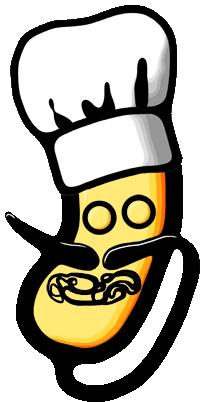Team:Edinburgh/Project
From 2008.igem.org
(→Overall project) |
(→Project summary) |
||
| Line 63: | Line 63: | ||
''' Nowadays the world-wide food shortage is becoming more and more important. As we can image, converting cellulose to starch will be one of the most sufficient ways to solve this problem .''' | ''' Nowadays the world-wide food shortage is becoming more and more important. As we can image, converting cellulose to starch will be one of the most sufficient ways to solve this problem .''' | ||
| - | == Project summary== | + | == '''Project summary'''== |
| Line 102: | Line 102: | ||
'''Andy's lab book''' | '''Andy's lab book''' | ||
| - | '''News and Research Articles''' | + | '''News and Research Articles''' |
| - | + | ||
| - | + | ||
| - | + | ||
== Results == | == Results == | ||
Revision as of 13:38, 1 July 2008
Contents |
University of Edinburgh 2008 iGEM Team
Team Members:
Students:
Andrew Hall, Adler Ma, Antonia Mayer, Omar Gammoh, Wenhong (Tina) Li, Xing (Ariel) He, Zejun Yan.
Main instructors:
Chris French, Alistair Elfick, Hongwu Ma
Tell us more about your project. Give us background. Use this is the abstract of your project. Be descriptive but concise (1-2 paragraphs)
| Home | The Team | The Project | Parts Submitted to the Registry | Modeling | Notebook |
|---|
(Or you can choose different headings. But you must have a team page, a project page, and a notebook page.)
Saving the World
"Cellulose is the most abundant form of fixed carbon, with 100,000,000,000 tons produced in cell walls by plants each year." (Wilson, 2008) [http://www.blackwell-synergy.com/doi/full/10.1196/annals.1419.026 ]
Nowadays the world-wide food shortage is becoming more and more important. As we can image, converting cellulose to starch will be one of the most sufficient ways to solve this problem .
Project summary
Recent Wiki updates
01 July 2008
Lysis: An alternative to cellulase secretion page updated. (AH)
Paris '07designed what they call "synthetic multicellular bacteria" (SMB). This involved reproductively capable "germline" cells which were dependent on diaminopimelate (DAP), a metabolite produced by reproductively incapable "somatic" cells. Low concentrations of DAP triggered the transcription of Cre-recombinase (under the influence of DAP-sensitivepromoter), which caused the removal of a gene required for bacterial reproduction by site-specific recombination (SSR), and resulted in the activation of a gene for the production of DAP by them.
We could adapt this system to cause some cells to produce cellulases and then lyse to release them into the medium. However, a simpler method could by-pass the need for SSR and could be as follows:
Our cellulase genes could be under the influence of a promoter sensitive to glucose concentration (activated by low [glucose], inhibited by high [glucose]). Low glucose would, therefore, cause the production of cellulases in some cells. We could engineer a reporter gene just downstream of a cellulase gene (under the influence of the same promoter), which could act as a transcriptional activator for lysis genes. So low glucose concentration would cause some cells to produce cellulases and the lysis gene transcription factor. Thus the cells would lyse, releasing the cellulases into the cellulose growth medium. The cellulases would work ex vivo to break down cellulose into glucose, which could then be taken up by other cells and converted into starch until the glucose is depleted to insufficient levels. This seems to be one of those ideas that, if it works, would be very "elegant", an abstract term that biologists seem to love! It might also provide some more interesting modelling opportunities than the very linear metabolic pathways, and we shouldn't need so much data to model this idea. (I still think that secretion of cellulases would be better though - it would be more straightforward, if possible.)
Next step along this train of thought: Find a promoter that is repressed by glucose!
The Experiments
Primer Design Our Primers Dr Chris French's OpenWetWare Site - Our one-stop destination for Biobrick protocols
External Links
Dr. Chris French's Wiki
Andy's lab book
News and Research Articles
 "
"

